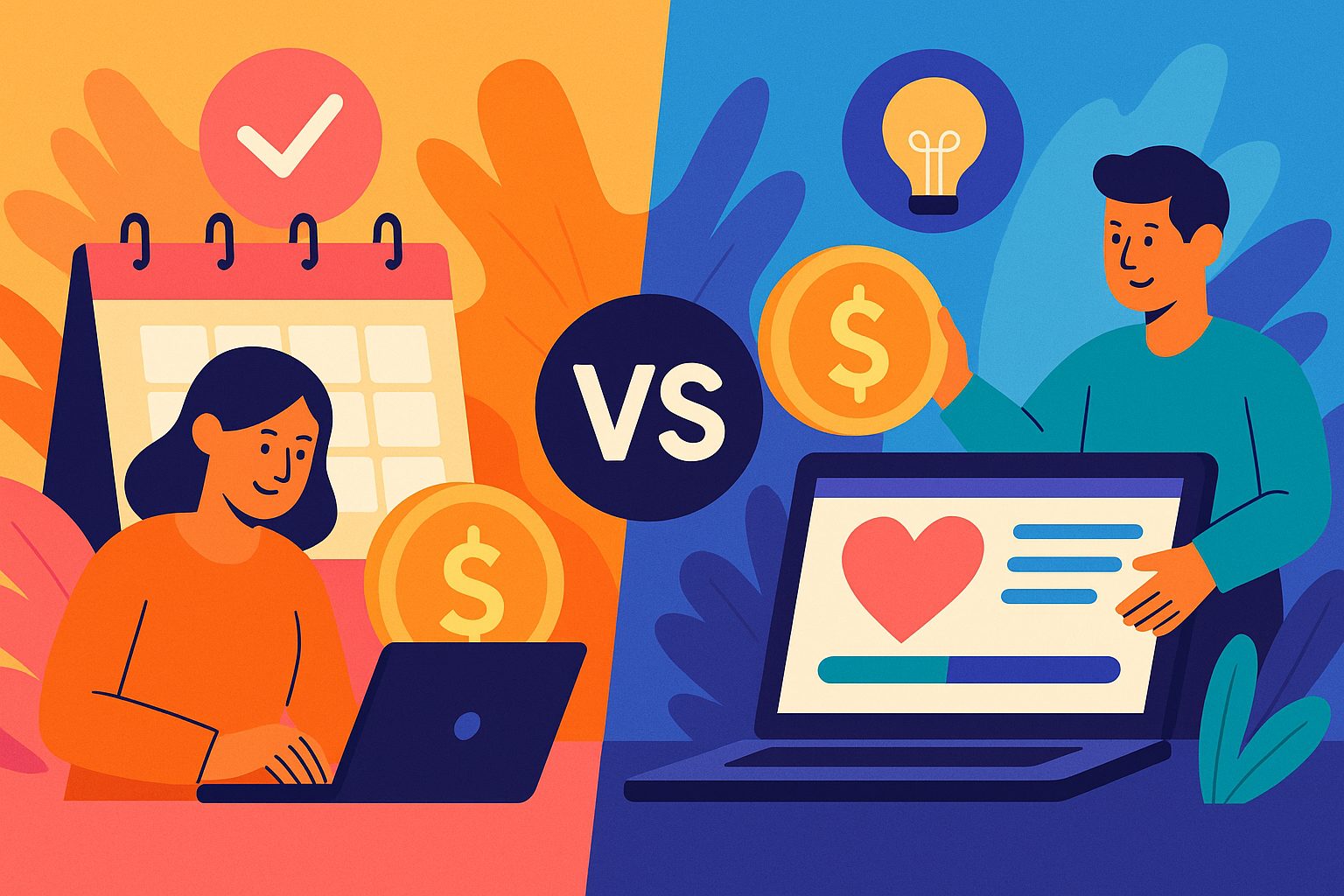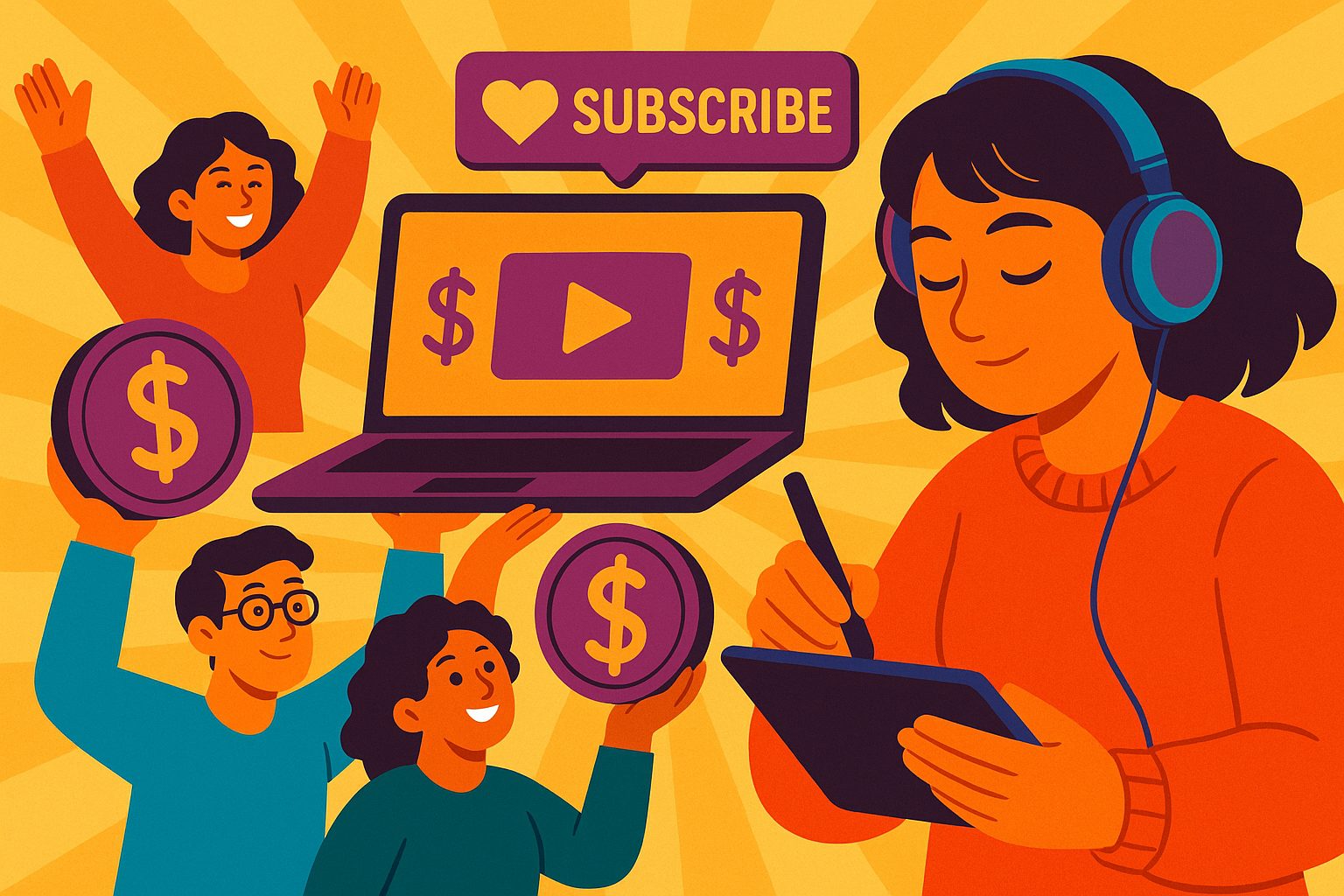Two Models, One Mission: Funding Creative Dreams
The world of crowdfunding has become a powerful force for creators, nonprofits, entrepreneurs, and innovators across nearly every industry. Whether you’re launching an indie film, publishing a book, recording an album, or building a community space, crowdfunding offers a way to raise funds directly from your supporters. But not all crowdfunding models are created equal. At the heart of the decision lies a fundamental question: should you opt for a one-time campaign or build a subscription-based funding model?
Both approaches can be incredibly effective—but they serve different purposes, audiences, and goals. Subscription crowdfunding is designed for ongoing projects and recurring income, while one-time campaigns are built around single launches, big ideas, or time-sensitive goals. Understanding the pros and cons of each can help you choose the right structure for your vision, your audience, and your future. This guide explores the strengths, challenges, and ideal use cases of each model, offering insights to help creators and changemakers make the best funding decision for their next big move.
The Power of the One-Time Campaign
One-time crowdfunding campaigns have been the go-to method for creators and entrepreneurs for more than a decade. Platforms like Kickstarter, Indiegogo, and GoFundMe are built around this model, offering tools to launch a defined project with a clear beginning, middle, and end. The primary strength of a one-time campaign is its focus. You launch with a singular purpose, rally a concentrated effort over a set timeline, and mobilize your audience around a clear deadline and goal.
This model works exceptionally well for launching new products, funding events, or producing a one-off creative work. It benefits from urgency—a finite timeline creates momentum. The “countdown clock” motivates backers to act quickly, share widely, and feel like part of something big. There’s often a buzz that builds throughout the campaign, culminating in a celebratory finish if the goal is reached.
One-time campaigns also lend themselves to press coverage and partnerships. The time-bound nature makes them easier to promote through media outlets, blogs, and influencer features. The storytelling is more concise, the messaging more direct, and the call to action more immediate. When executed well, these campaigns can raise significant capital and attract new audiences in a short period.
The Drawbacks of One-Time Funding
However, the downside of one-time campaigns is just that—they’re one time. After the campaign ends, the funding stops. The energy dissipates, and unless you’ve built systems for ongoing engagement, many of your supporters may move on. Creators often find themselves on a financial rollercoaster—highs during campaigns, followed by dry spells as they regroup and plan the next launch.
This cycle can be exhausting, especially for independent creators or small teams. It requires an enormous amount of upfront work—crafting the campaign, building the media assets, planning a launch calendar, and executing constant outreach. And if the campaign doesn’t meet its goal, some platforms operate on an all-or-nothing basis, meaning you receive nothing.
There’s also a challenge in converting campaign success into sustainable income. Many projects are underpriced or over-promised during a campaign in order to hit goals quickly, leading to fulfillment issues or long-term financial strain. Without a plan for continuity, the momentum often dies out once the campaign ends, and creators find themselves starting from scratch again.
The Rise of Subscription Crowdfunding
Subscription crowdfunding has emerged as a powerful alternative, offering creators the chance to earn reliable, monthly income by building a dedicated base of supporters. Platforms like Patreon, Ko-fi, and Substack are at the forefront of this movement, providing infrastructure for creators to publish regularly, share exclusive content, and foster long-term community relationships.
The core appeal of subscription crowdfunding is stability. Instead of raising a lump sum over thirty days, you cultivate a stream of recurring support that grows over time. This enables you to plan ahead, invest in your work, and reduce the financial stress that often comes with project-based funding. It’s particularly ideal for ongoing content creators—podcasters, writers, YouTubers, webcomic artists, educators, and indie developers—who produce regularly and want to build a sustainable ecosystem.
Another benefit of this model is community. Subscription supporters often feel like insiders—part of a shared creative journey. Because they receive consistent updates and perks, they’re more likely to become advocates and collaborators. Many creators report deeper emotional connections with their subscribers than with one-time backers, and this translates into better retention, richer feedback, and more meaningful engagement.
Challenges of the Subscription Model
Still, subscription crowdfunding isn’t a fit for every creator. Its primary drawback is the long game. Unlike the adrenaline-fueled surge of a one-time campaign, subscription models require time, patience, and consistency to build momentum. Growth is usually slow and steady—not explosive. For creators in urgent need of capital or those with a time-sensitive goal, this model may feel too gradual.
There’s also a psychological shift involved. Running a subscription model means you’re not just launching a product—you’re maintaining a service. You have to deliver consistent content or experiences every month. This can become overwhelming, especially for creators juggling multiple responsibilities or facing burnout. Managing expectations, communication, and workload becomes essential to avoid subscriber churn.
Furthermore, subscription platforms often take a percentage of monthly income, and processing fees can add up over time. Creators must weigh the benefits of recurring revenue against the obligations of continuous creation. Unlike a one-time campaign, which ends with fulfillment, a subscription model has no natural stopping point—it requires ongoing energy, commitment, and value delivery.
When One-Time Campaigns Win
There are specific scenarios where one-time crowdfunding campaigns are clearly the better choice. If you’re launching a new product, funding a feature-length film, building a physical installation, or staging a large event, a one-time campaign is likely the way to go. These projects have defined scopes, production timelines, and fulfillment needs. You can plan the campaign around a specific narrative arc, create milestones, and use the deadline to build hype and visibility.
One-time campaigns also work well for first-time creators who haven’t yet built an audience. With the right press push, social media strategy, or influencer backing, these campaigns can go viral and introduce your work to entirely new supporters. The format lends itself to storytelling, video production, and emotional urgency, making it easier to secure attention in a crowded digital landscape.
Finally, one-time campaigns allow you to test the viability of an idea before fully committing to long-term development. If you’re unsure how your audience will respond to a concept, running a campaign gives you a way to gauge interest, validate demand, and raise startup capital without long-term obligations.
Where Subscription Crowdfunding Shines
Subscription crowdfunding thrives when your work is ongoing, your audience is engaged, and your creative output is regular. If you’re releasing content weekly or monthly, running a serialized project, or maintaining a creative practice that benefits from long-term support, subscription is a natural fit. It empowers you to build a creative life that isn’t tied to external funding cycles or sporadic spikes in visibility.
It’s especially powerful for niche creators. If you have a small but loyal following, subscription crowdfunding allows you to deepen that relationship and generate revenue without needing viral success. A community of 300 people giving $5 a month provides more stability than chasing massive one-time campaigns with uncertain outcomes. You can focus on creating quality work for people who care—not chasing algorithms or ad dollars.
Subscription platforms also allow for creative experimentation. With recurring income, you can take more risks, try new formats, and develop ideas over time. You’re not boxed into a single deliverable or pressured to produce perfection in one shot. The freedom that comes with recurring support can lead to some of the most honest, vulnerable, and exciting work you’ll ever make.
Combining the Models for Greater Impact
For many creators, the best approach isn’t choosing one over the other—it’s combining both. One-time campaigns can be powerful tools to launch a big idea, while subscription models help sustain the journey that follows. You might start with a Kickstarter to fund your debut album and then invite your backers to become subscribers who follow your studio updates, demos, and tour plans. Or you might grow a strong subscriber base over time and then launch a campaign to fund a high-cost project they’ve helped shape.
This hybrid model allows you to build momentum at key moments while maintaining consistent income. It also gives your audience more ways to support you. Some fans may prefer the excitement of one-time campaigns, while others value the connection of monthly contributions. By offering both, you give your community options—and increase your overall financial resilience.
What matters most is building trust. Whether someone supports you once or every month, their decision to back your work is rooted in belief. Delivering value, being transparent, and showing appreciation are timeless principles that apply to every model. The format may change—but the relationship stays central.
Choosing What’s Right for You
Ultimately, deciding between subscription crowdfunding and one-time campaigns comes down to your goals, your creative rhythm, and your audience. Ask yourself what kind of work you’re producing. Is it ongoing or episodic? Does it require upfront capital or consistent backing? Are you comfortable with long-term engagement, or do you prefer focused bursts of effort?
Also consider your energy and your capacity. Subscription models require you to show up regularly, while one-time campaigns demand a full-court press for a shorter time. Both require marketing, storytelling, and community management—but in different rhythms. Think about what kind of momentum you can realistically sustain and what kind of funding structure aligns with your workflow and lifestyle.
There’s no one-size-fits-all answer—and that’s the beauty of the modern creator economy. You have the power to experiment, adjust, and evolve your funding strategy as you grow. Whether you choose a subscription platform, a one-time campaign, or both, what matters most is that your model reflects your mission and supports your vision.
Funding Your Future on Your Terms
Crowdfunding has unlocked a new era of creator-led innovation. No longer do artists, educators, changemakers, or entrepreneurs have to wait for gatekeepers to approve their ideas. Whether through the fast-paced excitement of a one-time campaign or the steady rhythm of a subscription model, the tools now exist to build the future on your own terms—with the support of people who believe in your work.
Subscription crowdfunding offers predictability, deeper engagement, and sustainable income for ongoing creators. One-time campaigns bring urgency, reach, and capital for big ideas. Both can work. Both can thrive. And both can help you make something that matters. In the end, crowdfunding isn’t just about money—it’s about people. It’s about building a community that believes in your dream enough to make it real. Whether they pledge once or subscribe for years, each supporter becomes part of your journey. Choose the model that helps you honor that connection, grow your vision, and create your best work—one contribution at a time.




